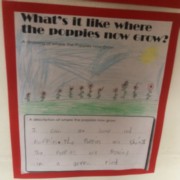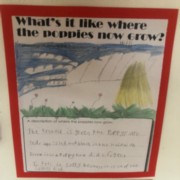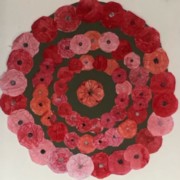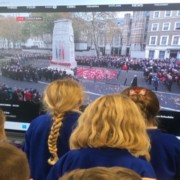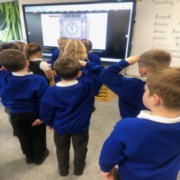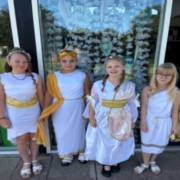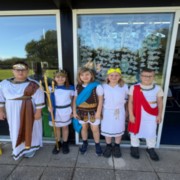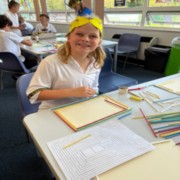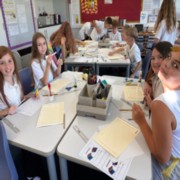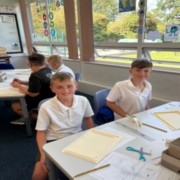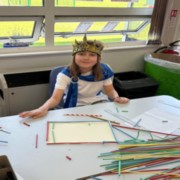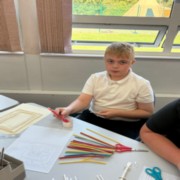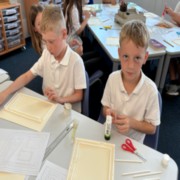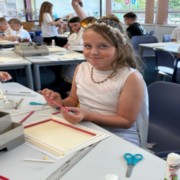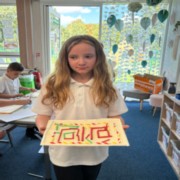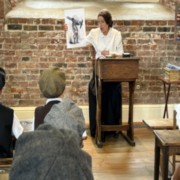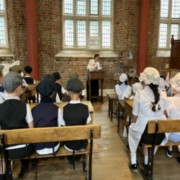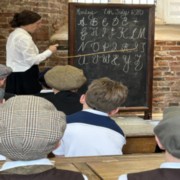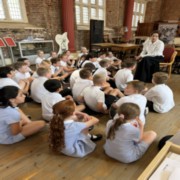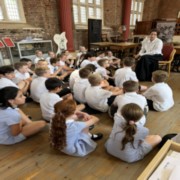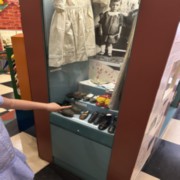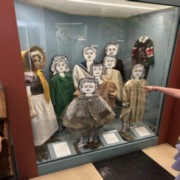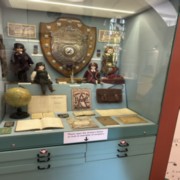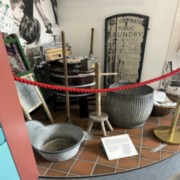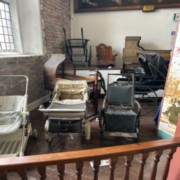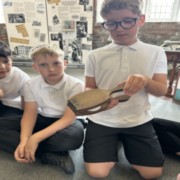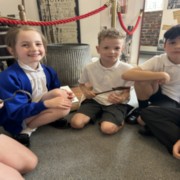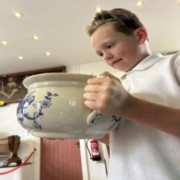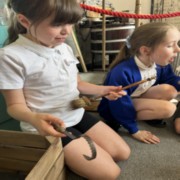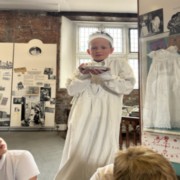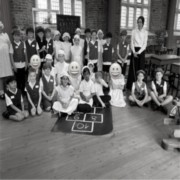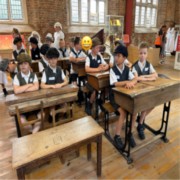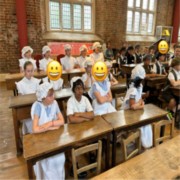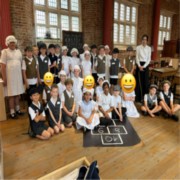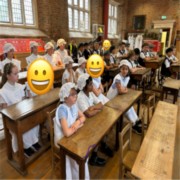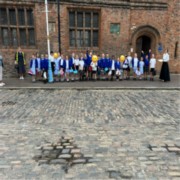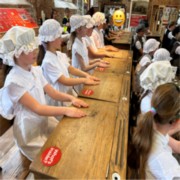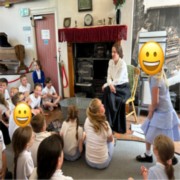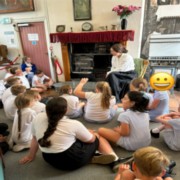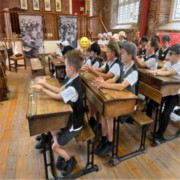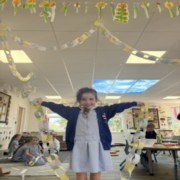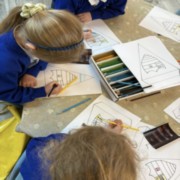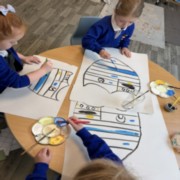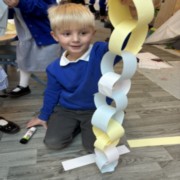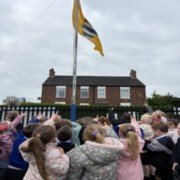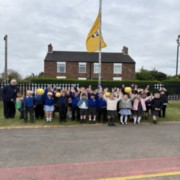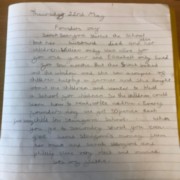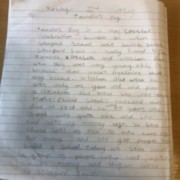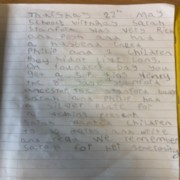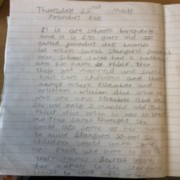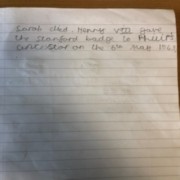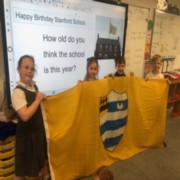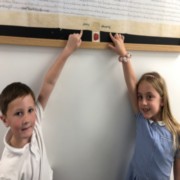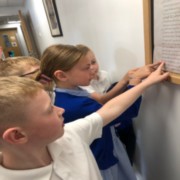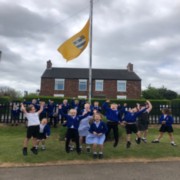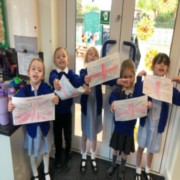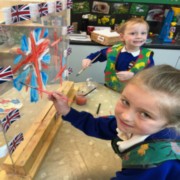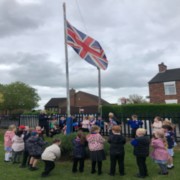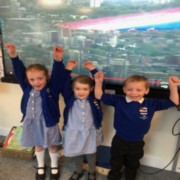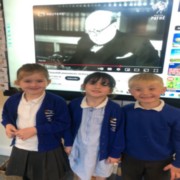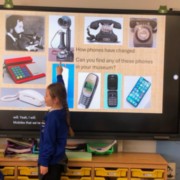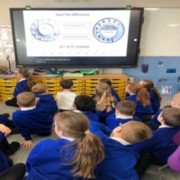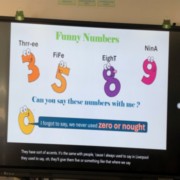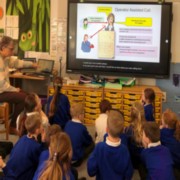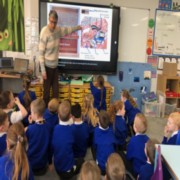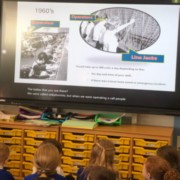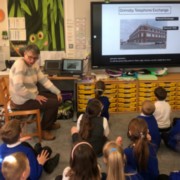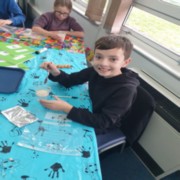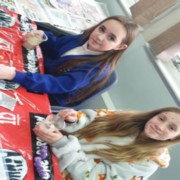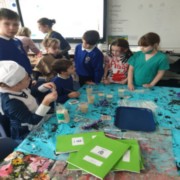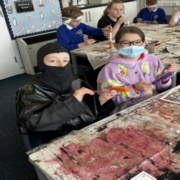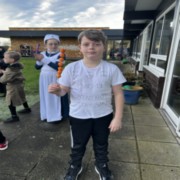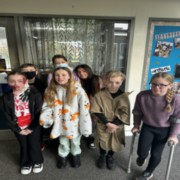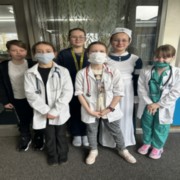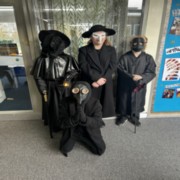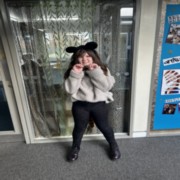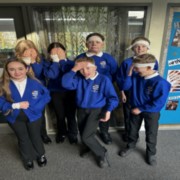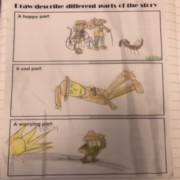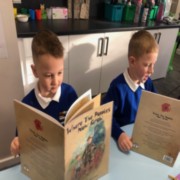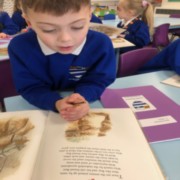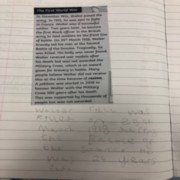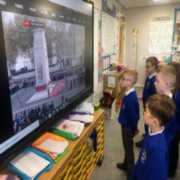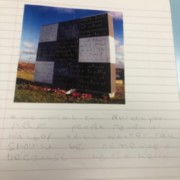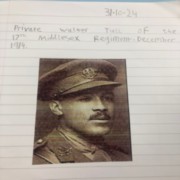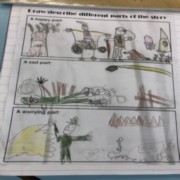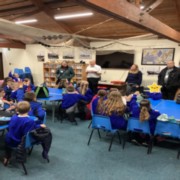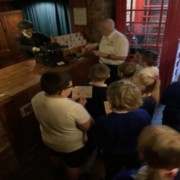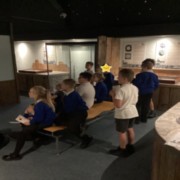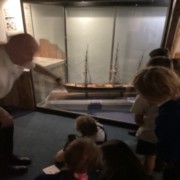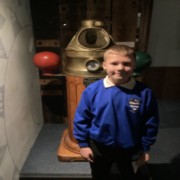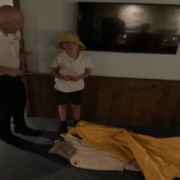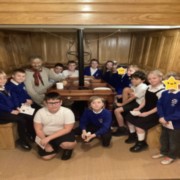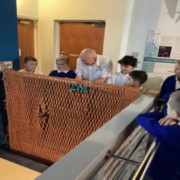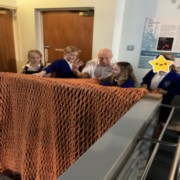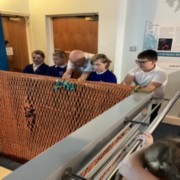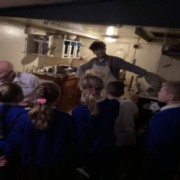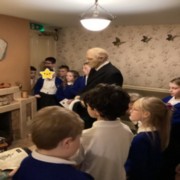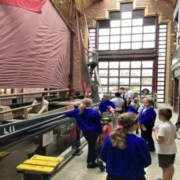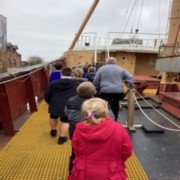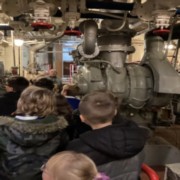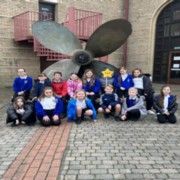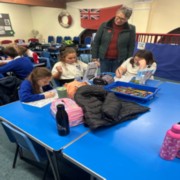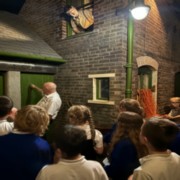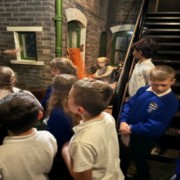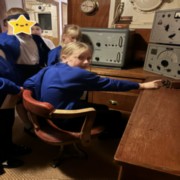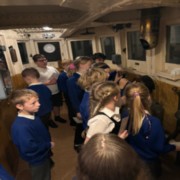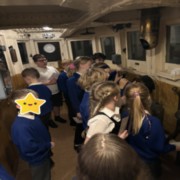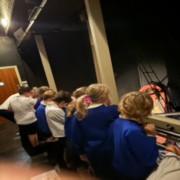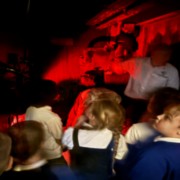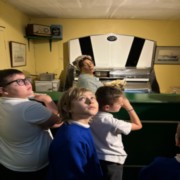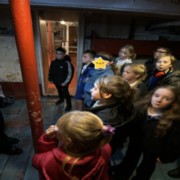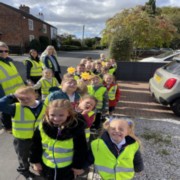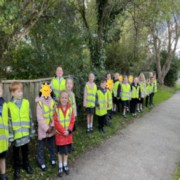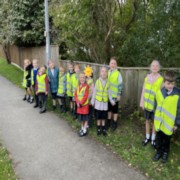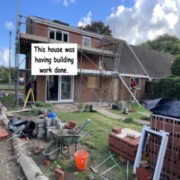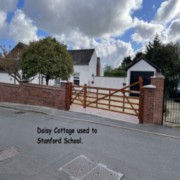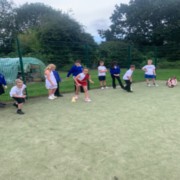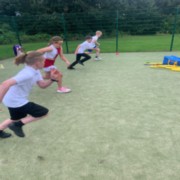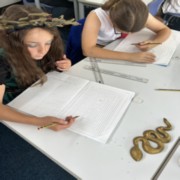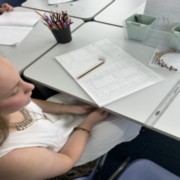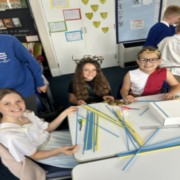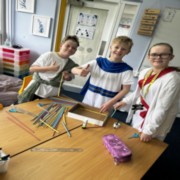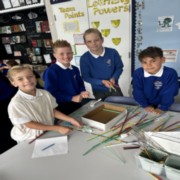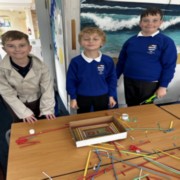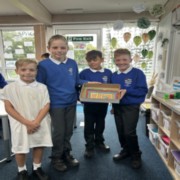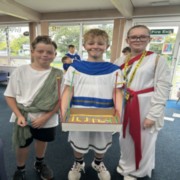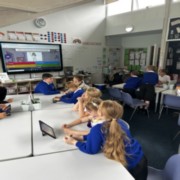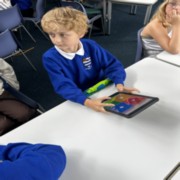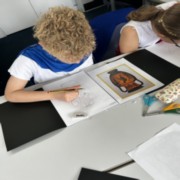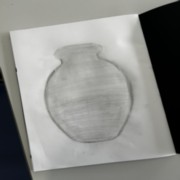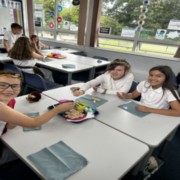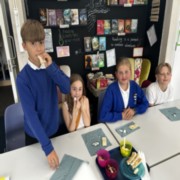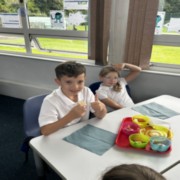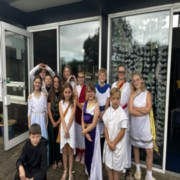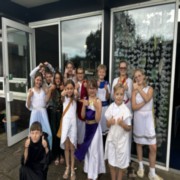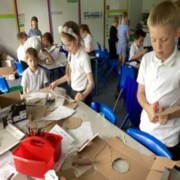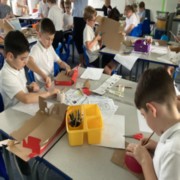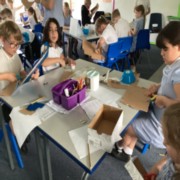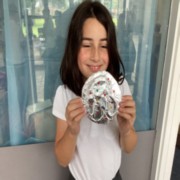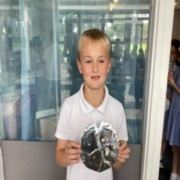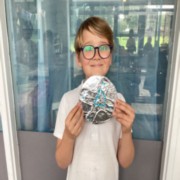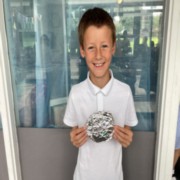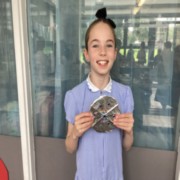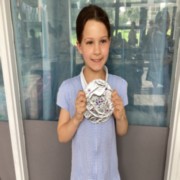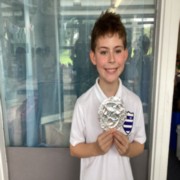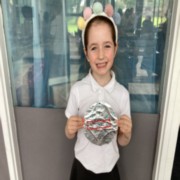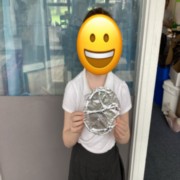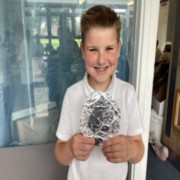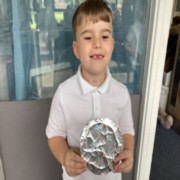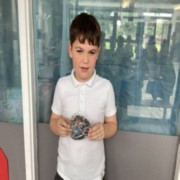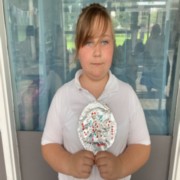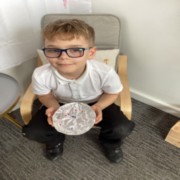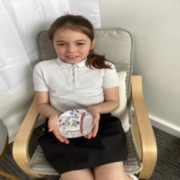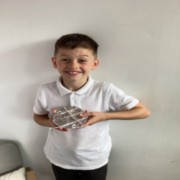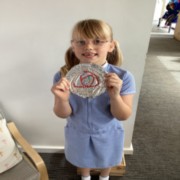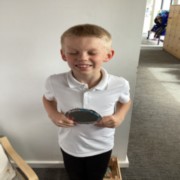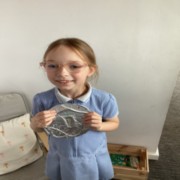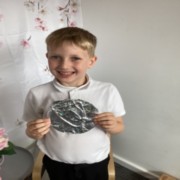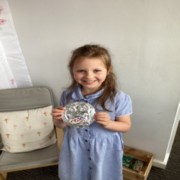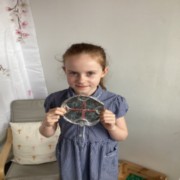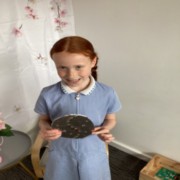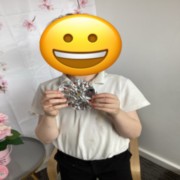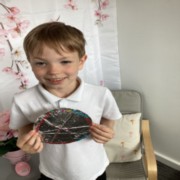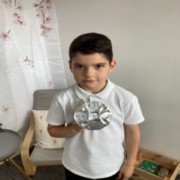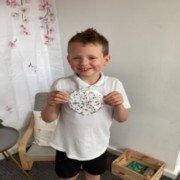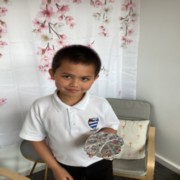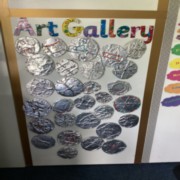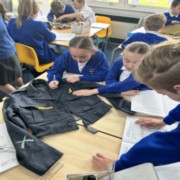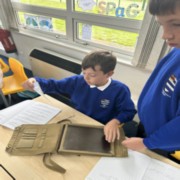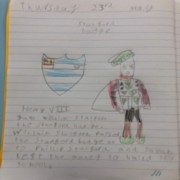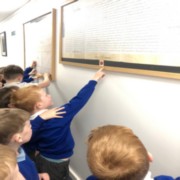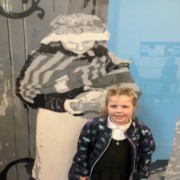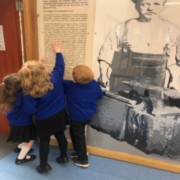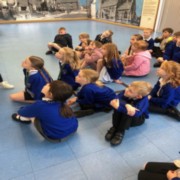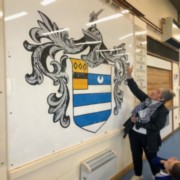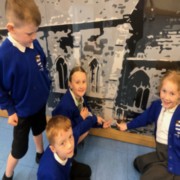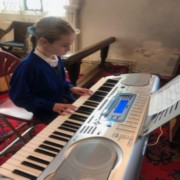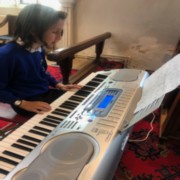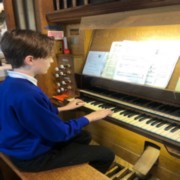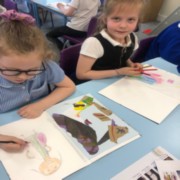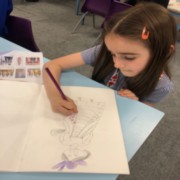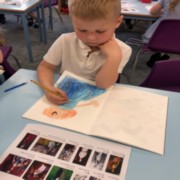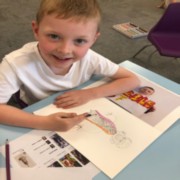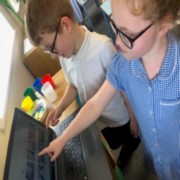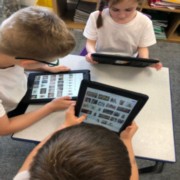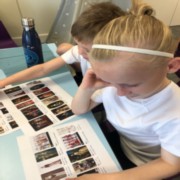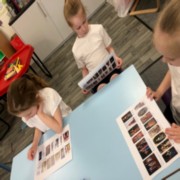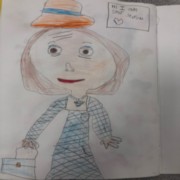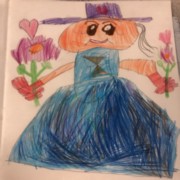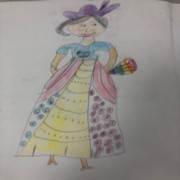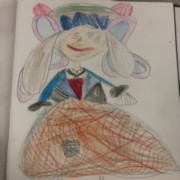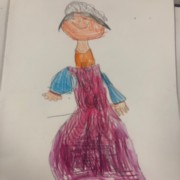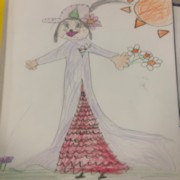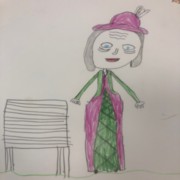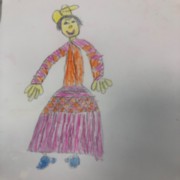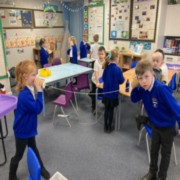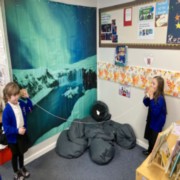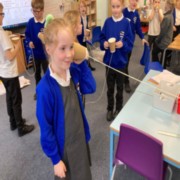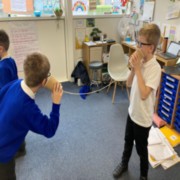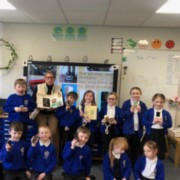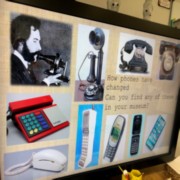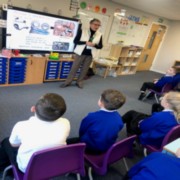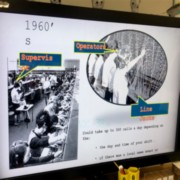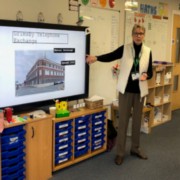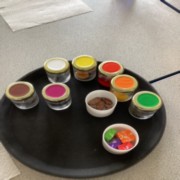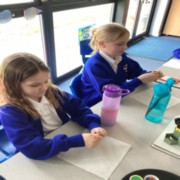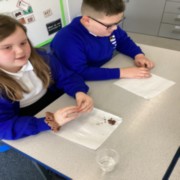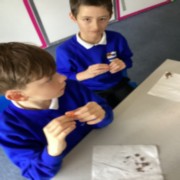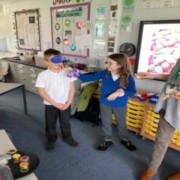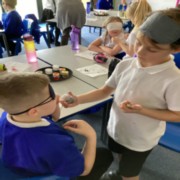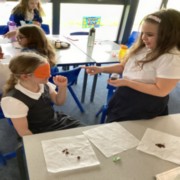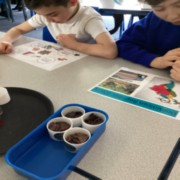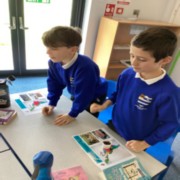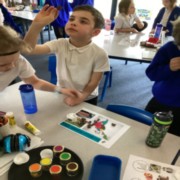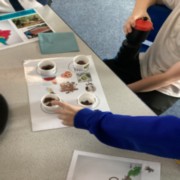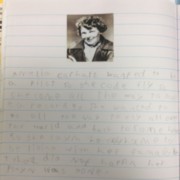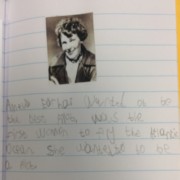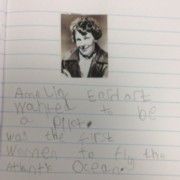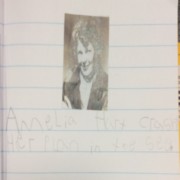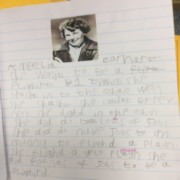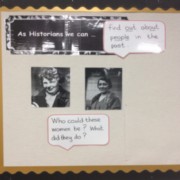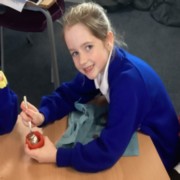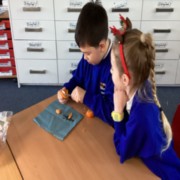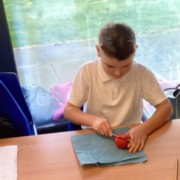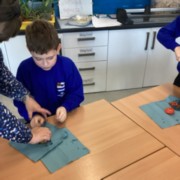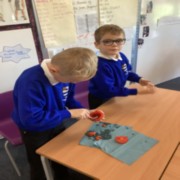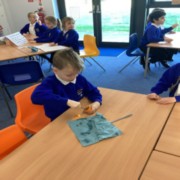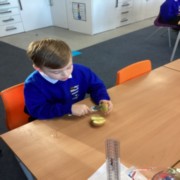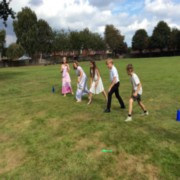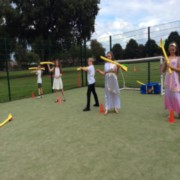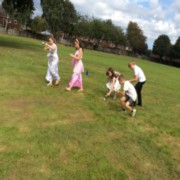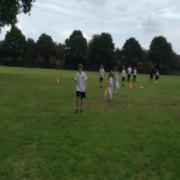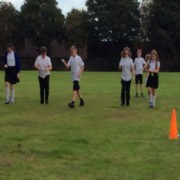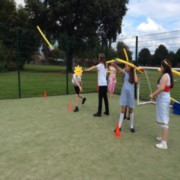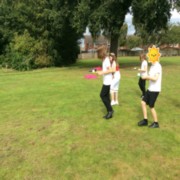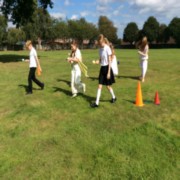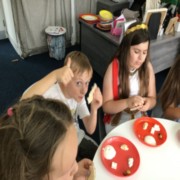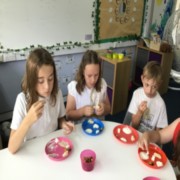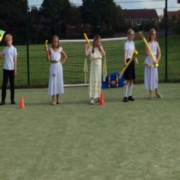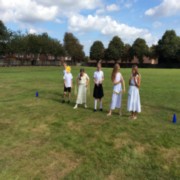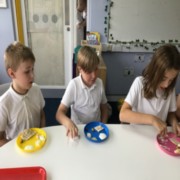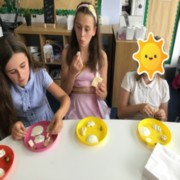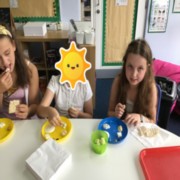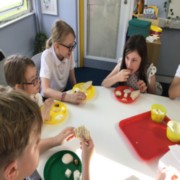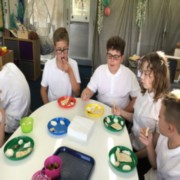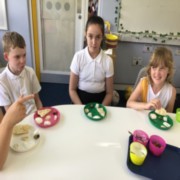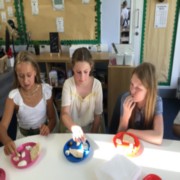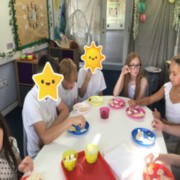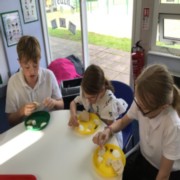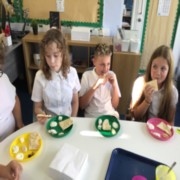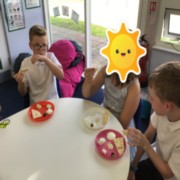History
Intent: The History curriculum at Laceby Stanford Primary Academy is unique. It is broad and balanced with a breadth of engaging opportunities. It is carefully planned and sequenced with key skills, concepts and knowledge that build on previous learning. Pupils revisit their learning and use and apply their knowledge fluently.
Implementation: The History curriculum is purposeful and relevant to the pupils. The knowledge and skills pupils acquire, build on their previous learning, allowing them to transfer key skills, knowledge and concepts to their long-term memories.
Impact: We are proud of the achievements of our pupils in History. Our pupils fluently apply their skills and knowledge within History and make connections to their existing knowledge and to other curriculum areas.
At Laceby Stanford Primary Academy we encourage pupils to be curious about the past and the way it affects our lives today. We aim to give our pupils a greater understanding of the world they live in and its history, to further develop their understanding of values and attitudes. We endeavour to deepen our pupil’s knowledge and understanding of people in other societies, religions, and cultures and countries, as well as their own. We teach key skills progressively from Foundation to Y6 so that the pupils are able to find evidence, weigh it up and reach their own conclusions.
Pupils learn to understand and use specific historical vocabulary called Tier 3 words. (Tier 3 words are subject-specific words that are used within a particular subject. This is the language of scientists, mathematicians, literary critics etc.) For historians, Tier 3 words could be words such as ‘legacy’, ‘heritage’ etc. Please see our progression of Tier 3 words for more examples.
The pupil’s knowledge is enhanced by many visitors, school trips to places of historical interest as a well as drama workshops, themed historical days, and close links with the local history group. We are also very proud of our heritage at Laceby Stanford Primary Academy and enjoy a special celebration each year on Founder’s Day.
Virtual Museums
Love History? Why not go on a tour of a virtual museum.
A parents guide to the new National Curriculum (not Foundation/Seedlngs class). More information can be found on the Rising Stars website
Founder’s Day Progression of Skills and Knowledge
Blossom Class - being historians
A Military Campaign for Justice
Year 6 Hook Day: Medicine and Disease
Year 2 History and Remembrance
Y5 Grimsby Fishing Heritage Trip
Year 6 - Ancient Greece Hook Day
Year 1 and 2 Collaboration Work: Imagining Sarah Stanford
Year 6 Crime and Punishment Hook Day
Remembrance: Lest We Forget
The Year 2 children paid their respects on Armistice Day by joining in with the two minutes silence. They have been thinking about the affects of war on soldiers, families and animals.
‘We wear poppies to remember the soldiers who died or who got badly hurt.’
‘Together we made a big poppy wreath because poppies grew in the fields after WWI ended.’
‘Mrs. Brady found a soldier in her family who died in WWI. It was so sad for his family when he didn’t come home.’
‘We are reading a story called Where the Poppies Now Grow and it’s about two boys who grow up to be soldiers and end up being soldiers.’
‘Lots of animals died in wars, animals like horses. People wear purple poppies to remember them.’
Blossom Class - being historians

The children have really enjoyed learning about our local history this term, such as how Grimsby got its name and how Laceby has developed and changed over the years. The children were amazed to find out that artefacts from the Stone Age and Anglo Saxon times have been found in the village and in Cooper Lane in the past. Did you know that over the years Laceby has had 26 different variations of its name??
Y6 - Ancient Greek Hook Day!
This term we will be learning all about the Ancient Greeks.
For our Hook Day, we discovered where the legend of the Minotaur and The Labyrinth came from, different Greek Gods and Goddesses, Ancient Greek art and architecture and discussed how the Ancient Greeks have influenced the modern world.
We are really excited to learn more about the Ancient Greeks - we will keep you posted on our Barley Class Blog!
Year 4- Victorian Experience
The children had a fabulous day at the Hands On History Museum in Hull, finding out what it was like going to school in Victorian times. They loved dressing up and handling artefacts from that time.
Founders Day💙
Foundation Stage
🎉🎈 Our Foundation Stage class has been having a blast getting ready for Stanford School's Founder's Day celebration! 🏫🎉 We've been busy making paper chains, bunting, and painting our school badge to decorate the classroom. It’s been so much fun learning about the history of our school and celebrating its special day!
We took a look at lots of amazing photos, thanks to our history lead Mrs. Brady, and some old class photos from Mrs. Groves. It was so interesting to see how much the school and the people have changed over the years! 📸✨
The children also learned most of the words to the school song 🎶 and made some beautiful birthday cards for our School! 🎂 It’s been a fantastic experience and a great way to kick off our foundation children’s very first Founder's Day at Stanford! 💙
Year 2
Happy 295th Birthday to our school!
The Year 2 children enjoyed learning about the rich history of our school and had fun celebrating the school’s special birthday.
‘It was interesting looking at the old writing on Sarah Stanford’s deed. It was difficult to read, but I could read some of the words.’
‘Sarah Stanford had written her name with a quill.’
‘The school flag is enormous.’
‘Sarah had a sad life. She did a good thing leaving her money to help all the people in Laceby.’
‘If Sarah hadn’t left her money, we might not be going to school here in Laceby.’
‘I’m interested in the Stanford badge. It’s so special as it came from King Henry VIII. I like to draw the whole coat of arms with the knight’s helmet.’
VE Day Celebrations🇬🇧
Foundation
Mrs. Brady our History lead made a special visit to see the Foundation children to teach them all about VE Day.
The children could remember lots of interesting facts:
‘VE Day was 80 years ago.’
‘It was to celebrate the end of the war.’
‘People heard that the war had stopped on their radios.
’ ‘Winston Churchill was the Prime Minister.’
‘The Red Arrows flew over London and made red, white and blue smoke.’
‘People had street parties. I saw black and white photos of them. Some ladies were dancing with soldiers.’
‘We saw lots of Union flags and coloured and painted some.’
‘We did 80 claps under our big flag and cheered!’
Year 2
The Year 2 children learnt all about Victory in Europe Day.
They had a special assembly and visited the display in the hall to find out more information.
'It has been 80 years since World War II ended.'
'In 1945 people had street parties and parades to celebrate.'
'VE Day gives everyone the chance to think about, and remember the soldiers who died in the war.'
'People remember and I have seen lots of poppies.'
'I am interested in History and I found out about George Butler. There is a street in Laceby called
George Butler Close and it was named after him because he was a famous pilot in the RAF.'
Mrs. Brady looked in the school log book and found out that all the children on 8th May 1945 were given two
days off to celebrate!'
The History of Communication
The Year 2 children have been finding out about the history of the telephone.
They enjoyed a very interesting and informative talk from Mrs. Griffiths who told them all about her time working at the telephone exchange in Grimsby. She explained how older phones worked and showed them pictures of the switchboard and explained what an operator or telephonist did when answering and connecting calls.
‘Mrs Griffiths was a real operator and helped people make phone calls.’
‘You had to be clever to know where to put the switches in the switchboard.’
‘It seems funny to think that not everyone had a phone a long time ago.’
‘I was shocked when Mrs Griffiths told us that the men at the telephone place were getting paid a lot more than the ladies- even if it was the same job! That’s really not fair!’
A Military Campaign for Justice!
The children in Year 2 enjoyed learning all about the amazing life of Walter Tull.
"Walter was the first black professional footballer. He ended up playing for Spurs!"
"Walter became the first black British officer in the army during WWI."
"Walter had a very hard life and it was shocking to hear that he was treated so badly because of the colour of his skin."
"We found out that there is a memorial to help people learn all about Walter Tull and when we watched a
programme about it. We saw some members of his family who are still alive today."
"It is so sad that Walter died in WWI and his family did not get a medal in his memory."
The children felt very strongly about Walter's family not receiving a Military Cross medal, like so many of the other families
who had lost an officer. So they got to work and wrote some very strongly worded letters to Sir Keir Starmer!
They were absolutely thrilled to receive a reply.


Year 6 Hook Day: Medicine and Disease 🦠
Year 6 pupils had a fantastic hook day, learning about medicine and disease in prehistoric and Ancient Egyptian times. We also learnt about the history of medicine and what germs are and how to prevent them from spreading! We created our own 3D germs and took part in different Roman circuits as exercise prevents illness. Using our Art skills, we used clay to create our own plague masks and completed an investigation on germs!! We look forward to the rest of this exciting topic!
Year 2 History and Remembrance
At the going down of the sun and in the morning…
We will remember them.
The children have been learning about the First World War from a wide range of sources.
They have been fascinated to learn about the life of Walter Tull and to read a special poetry book called “Where the Poppies Now Grow.”
“We watched the Cenotaph on the TV and we joined in with the two minutes’ silence. I think it is very important to remember the brave soldiers from the wars.”
“Walter Tull gave his life for our country. He was an amazing man who became the first black officer in the British Army. I have been thinking about him a lot because he was so brave.”
“It has taken a very long time before people have found out about Walter Tull. I think it is very good that he has a statue that people can visit in Northampton. I wonder if people laid poppies there?”
Y5 Grimsby Fishing Heritage Trip
Year 5 had an excellent trip to the Grimsby Fishing Heritage Centre. The children were really enthusiastic and polite when exploring the museum and the Ross Tiger trawler. They learned about what life was like at the height of the fishing industry in Grimsby (around the 1950s) through hands-on experiences with historical artefacts. They were able to make links back to some of the themes we used in our Taiko drumming performance from September as well.
Laceby Field Work Walk
Year 1s have been doing some field work around Laceby.
We have been learning about the different types of houses and looking at the age of houses.
After looking at a map of Laceby, we went on a walk to spot as many different styles of home as we could.
We found: detached, semi-detached, terraced, bungalows, cottages and even a house in the style of a Tudor house.
Pupil A: “I spotted the black stripes made out of wood”
Pupil B: “We know it’s a modern house because it has bricks as well and Tudors didn’t use bricks.” We also found Daisy Cottage, which children were fascinated to learn, used to be our school! Look out for our local artwork later this Term.
Year 6 - Ancient Greece Hook Day!
Barley class had a fantastic Hook day learning all about different aspects of Ancient Greece! We started our day by focusing on the Greek myth, Theseus and the Minotaur, discovering the mythical creature who lived in a labyrinth. Our interest on labyrinths enabled us to use our shape, space and measures maths skills to design our own, complex labyrinth designs- This was tricky but we persevered and succeeded- just like Theseus did! We continued our journey through Greek culture and lifestyle but tasting Greek food and studying the history of the Olympics through primary sources: Greek pots as they depicted the events during this time. We ended our day taking part in a range of Olympic sports!
Year 4 - being artists
On our transition week the class learnt about Anglo Saxons and the amazing brooches that they made. We tried to make some ourselves using cardboard, string, tin foil and gems. Don’t they look amazing on our Art Gallery display?
World War 2 Workshop
Blossom class had a fantastic WW2 learning experience this week! Throughout the morning pupils learnt about the road to War and the ARP (Air raid precautions) this then led the pupils in learning about ARP first aid and having the opportunity to administer first aid to their peers. Pupils then had the opportunity to handle a range of objects from WW2. During the afternoon pupils learnt about evacuees and rationing and the dangers of UXB devices.
'This was such a great day! I did not realise what the gas masks looked like for babies- they were huge!'
" Rationing shocked me! i don't think i would have been able to manage on rations'
' I learnt so much today! This was a great workshop on WW2!'
The Collection
Pumpkin class have had a fantastic day at the collection. We got to be Roman centurions and try on the armour they would have worn. We also got to handle some real life artefacts. After lunch we got to have a go at being archeologists and excavate a site.
“It was a fantastic day, I loved being a centurion!”
“I liked exacting a site and finding artefacts”
“I loved being able to pick which artefacts would make it into the museum”
D-Day 80 Remembrance
On 6th June 2024 we marked 80 years since D- Day with a special assembly in school.
The Royal British Legion in Laceby kindly invited a group of us to attend the important 11 o’clock service at the cenotaph in Laceby.
L- We have learnt that D- Day was the largest seaborn invasion in history and it was the beginning of the liberation of Western Europe.
L- We represented the school and we wrote thoughtful messages on a card.
W- I was chosen to lay our poppy wreath. I bowed my head to show respect.
W- Rev. Chris read out prayers and we reflected on all the soldiers who lost their lives on the beaches at Normandy 80 years ago.
M- A trumpet player played the last post.
M- Miss Elwis showed us her great grandfather’s name on the cenotaph. He had died in the war. Mrs. Brady had told us lots of information about D-Day and her own grandfather had even been there in France.
L- It was a moving service and we all said that we would like to attend the 100th anniversary in twenty years time.



Super History Home Learning!
Well done to our fantastic Year 1 pupil who delivered her own History lesson all about
The Great Fire of London to the Year 1 children. She had done lots of research at home and made a very interesting powerpoint presentation. The children all enjoyed learning lots of new facts and making observations of the fascinating illustrations and paintings of London.



Founders Day 2024
Happy Birthday Stanford School!
The Year 2 children enjoyed learning about the rich history of our school and celebrating together on Founder’s Day.
S- I Know when Stanford School was founded and how old the school is. I found 1730 on my timeline. I think it’s amazing that the school in 294 years old!
D- We have been investigating the past. We asked the question- How do we know about Sarah Stanford? Mrs. Brady showed us her deed and I saw her name on it. She had written it with a quill. We also found other information in the Stanford Centre, on Google and we looked at old black and white photos. I was interested in the silver plate which had the Stanford badge on it.
C- Mrs. Brumfield told us about the Stanford Coat of Arms. I noticed that the colours were a bit different to our school badge. It is really special because it came from King Henry VIII.
F- Sarah Stanford’s legacy is that the money she has left has given hundreds of children a school to go to, so that they got the chance to learn reading, writing and maths. Even today, she is helping me and my friends. I think the children in the future will get her help too.
Year 6 Founders’ Day Service 2024
Year 6 celebrated Founders’ day with a wonderful service at St Margaret’s Church! Pupils shared the Stanford legacy, memories of of their time at Stanford and their hopes and dreams for the future! As part of their English work, Barley class wrote a wonderful poem on our 5Cs: creativity, community, care, curriculum and challenge! We also had some wonderful piano pieces performed by Stanford pupils, showcasing their wonderful, musical talents!
Lead by our Head pupils and Rev Chris, they performed these pieces, along with the wonderful Live your story song to Governors, community members and the Stanford Trust!
Our School History
This week we have been learning about our school history. This week we will celebrate the school’s birthday.
We used our creative skills to make our school badge. Some year 5 pupils came to help us.


Year 1 and 2 Collaboration Work: Imagining Sarah Stanford
The children realised that there aren’t any photographs, paintings or drawings of Sarah Stanford.
They tried to imagine what she might have looked like. Together they researched clothing in the 1700s. They looked at paintings and portraits of ladies and produced sketches and finished drawings.
“I think her clothes would have been made from beautiful fabric because she was a rich lady.”
“She would have worn a long dress and a smart hat.”
“Ladies in the 1700s had big skirts and I think she would have worn a big skirt with a bustle at the back.”
“Sarah Stanford would have a kind face because she was a kind lady leaving money to build Stanford School.”
“I think she was an old lady, so I have given her grey hair and wrinkles.”
“I have drawn Sarah Stanford with a fancy hat and lots of decorations on her clothes. I think she might have worn jewels.”
“There aren’t any photos of her because cameras hadn’t been invented then.”
“I gave Sarah a blue dress like the Stanford badge.”
Year 6 Crime and Punishment Hook Day
We had a marvellous day in Barley Class today (or HMP BARLEY as it will now be known!), to introduce our new topic, 'Crime and Punishment'.
We looked at the different types of crimes that can be committed in modern day Britain, how they can be different in other countries and also how they have changed over time. We then became criminals on the run and created WANTED posters for own crimes!
Part of solving crimes is investigating what has happened - we began to find out about the importance of DNA and fingerprints - analysing our own and identifying if we have whorls, swirls or ridges!
We had to be investigators to see who ‘killed Mrs Smith! Using the different pieces of evidence found at the scene of the crime, we had to work out which of her colleagues was guilty!!
We are very excited about this topic - keep checking our blog to see all of the fabulous things we will be learning about this term.
Year 4 Hook Day
This term we are learning about the Victorian period of British history. For our hook day, we learned about what Victorian schooling was like and how it compares to modern schooling. We started the day by experiencing what it might have been like for Victorian children. Pupils paid a (plastic) penny to their teacher, had to follow strict rules and refer to adults as "Sir" or "Ma'am" and sit in rows facing the front. We practised calligraphy and reciting poetry and times tables, before taking part in a "drill" (which was their version of PE). We also looked at a real head teacher log from Stanford in the 1800s, which was full of interesting information, such as the school having to close due a measles outbreak over 100 years ago. We also had a go at using decoupage as a craft skill.
Pumpkin Romans Hook day!
Today in Pumpkin class we had our Roman hook day. We have been looking at mosaics and how Romans used mosaics to show wealth and importance. We had a look at a mosaic we have in school of our badge for inspiration. Then we got designing our own mosaics using foam and paper squares.
"It was have taken the Romans a long time to make mosaics"
"The little stones they use are called tesserae"
"The tools they used to make mosaics with were a hardie and a chisel"
Stone Age Quizzes
In Pumpkin class today to finish off our topic of the Stone Age in History we used our retrieval quizzes we made to make a quiz on Kahoot!
Well done to team soccer city on their victory.
“It was really fun”
“I was so excited the whole time!”



The History of Communication: Telephones
The Year 2 children have been finding out about the history of the telephone.
They enjoyed a very interesting and informative talk from Mrs. Griffith who told them all about her time working at the telephone exchange in Grimsby. She explained how older phones worked and showed them pictures of the switchboard and explained what an operator or telephonist did when answering and connecting calls.
In the classroom, the children had fun exploring the old phones in their phone museum and also making string telephones to talk to their friends.
H- Alexander Graham Bell was an inventor and he also liked teaching deaf people.
C- Alexander Graham Bell if famous for inventing the world’s first telephone.
J- Mrs. Griffith told us about phones with a dial and she had to use a pen with a round end to move it round to dial a number.
E- Queen Elizabeth was the first person who could make a phone call to someone else without having to call the operator first.
J- Mrs. Griffith showed us how to say telephone numbers clearly over the phone.
Chocolate Workshop
Year 4 had a special visitor this week who taught us lots about chocolate. We learned about its development throughout history and links to the Ancient Maya civilisation (that we have been learning about). We also learned about the conditions for growing cocoa pods within tropical rainforests and where the ingredients for chocolate are harvested. After this, we were taught some of the skills of what it takes to be a chocolate taster, with blind aroma tests, followed by tasting a variety of chocolates and identifying what ingredients they might include.
Stonehenge

We love celebrating the fantastic home learning that is produced in Pumpkin class. This fantastic piece of home learning took inspiration from us looking at Stonehenge in our recent History lesson.
Being Historians
Year 1s have been Historians this week. They have been finding out about Amelia Earhart and what she has done. Firstly, the children looked at the questions on the Learning Wall and the photos of two women. They used talk partners and shared their thoughts:
Child A: I think they are very old or not alive any more because the pictures are black and white.
Child B: I think they could have been actresses because they look good.
Child C: They look happy in the photos.
Child D: Maybe they are in the same family.
We then watched an interactive version of Amelia’s story and the children wrote what they had found out. Look at some of our work.
Pumpkin Hook Day!

We had a fantastic hook day in Year 3. We went in our nature area and role played for our English. We asked ourselves what would it have felt like to be in a cave? What senses would we have used? What would we have done? We then used what we role played to write a piece of descriptive writing using exciting vocabulary and expanded noun phrases.

Mummification
In History this week we have looked at mummification and the process it entails. We learnt that when people were mummified to reduce the water in the body and to act as a preservative, they used Natron. We investigated using different kinds of salt on different fruits and vegetables to see which one would be a modern-day substitute for Natron. We scooped the insides of the fruit and veg out, weighed it and covered in different salts. Next week we will weigh the fruit and veg out again to see which salt has absorbed the most amount of water.
Remembrance Day
This afternoon Mr Smith from the British Legion came to talk to us all about Remembrance Day. We had a chance to ask questions about Remembrance Day and Mr Smith explained what happens, he also read us a poem called 'The inquisitive mind of a child.' A big thank you to Mr Smith for coming to visit us, and sharing his knowledge with us.


Celebrating our Sisters
Year 5 have been 'celebrating our sisters' for Black History Month! We used a range of secondary sources to research information about black women and their 'first' achievements, such as the first black policewoman, author and MP. We had some great group discussions as to why it is so important to celebrate these achievements.



Black History Month
The children Year 2 have been finding out all about the life of American artist, Alma Thomas. They were very shocked to learn that during her life she had been treated very unfairly because of the colour of her skin. The children learnt the meanings of the words; ‘racism’ and ‘discrimination'. The children enjoyed exploring her art work and found her colourful pictures inspiring, and so they decided to create some of their own.
Ancient Greece Hook Day!
Barley class had a fantastic Hook day learning all about different aspects of Ancient Greece! We started our day by researching Greek God and Goddesses, looking at what power they held and why they were so important. We then focused on the Greek myth, Theseus and the Minotaur, discovering the mythical creature who lived in a labyrinth. Our interest on labyrinths enabled us to use our shape, space and measures maths skills to design our own, complex labyrinth designs- This was tricky but we persevered and succeeded- just like Theseus did!
In the afternoon we continued our journey through Greek culture and lifestyle but tasting Greek food, designing a Greek pot using Greek designs and also the artefacts and finished our day with a mini Greek Olympics!
Egyptian Hook Day!
Today in Pumpkin class we have had our hook day. We have learnt lots about Egyptians and how they used to live, we even had a virtual tour of the British Museum around the Egyptian exhibition. Then we learnt all about papyrus paper and how it was used, then we had a go at making our own!
